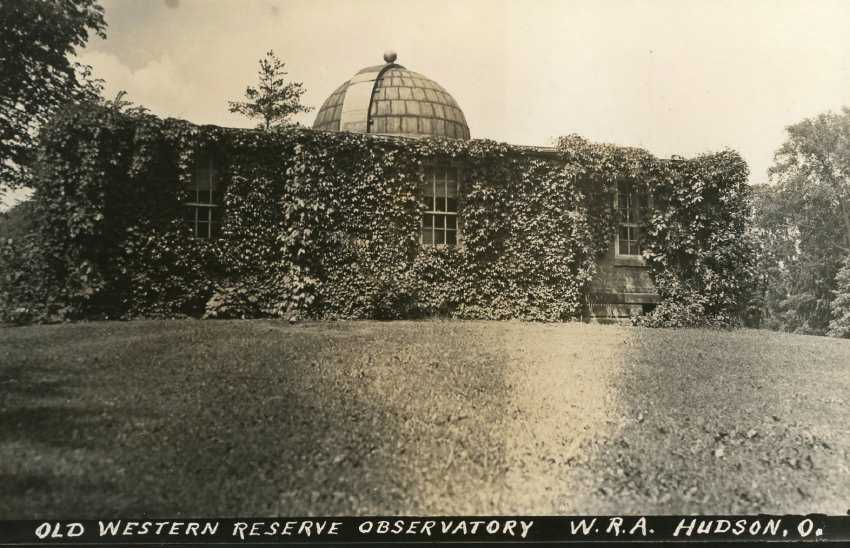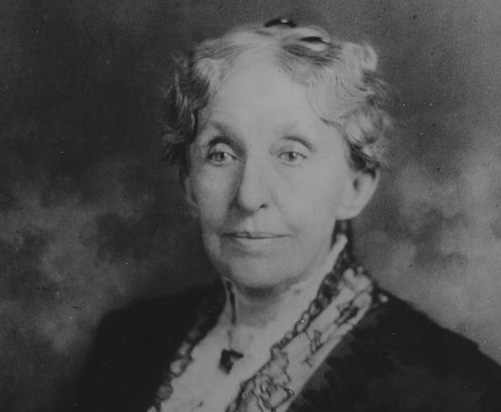MATTHEW CANFIELD READ: MAN OF MANY TALENTS
by James F. Caccamo
Ex Libris, Volume 7, Number 7 (November-December, 1985)
One of the odd aspects of local history is how reputations rise and fall. When Hudsonites are asked today to list the most important citizen in the history of the town, most would reply with “James W. Ellsworth” or “David Hudson“–or “John Brown” … “Owen Brown” … “Grace Goulder Izant” …or perhaps “Clarence S. Gee”. If the same question were asked of a Hudsonite from 1900, chances are that many ‘ of them would have said, without hesitation, “Matthew Canfield Read”.
Certainly, Read’s accomplishments and reputation should have earned him continued acknowledgement in Hudson, but the fact is that few of Hudson’s citizens are aware of Read or his accomplishments.
Matthew Canfield Read was born on August 21, 1823 in Williamsfield, Ashtabula County, Ohio, the son of Massachusetts natives Ira and Mary Read. After completing prepatory school, this Ohio farmboy enrolled, in 1844, in one of the most prominent colleges in the Midwest–Western Reserve College in Hudson, Ohio.
After graduating from Reserve in 1848, Read began a prestigious academic career that included teaching, law, and newspaper writing.
When the Civil War broke out, Read postponed his legal career to join the Sanitary Commission, and while stationed in Tennessee, he conceived the idea of a hospital garden to give fresh vegetables to the wounded.
Read was rewarded for his war service when President Andrew Johnson appointed him Deputy Revenue Collector. But his real loves were history, archeology, and geology, and these fields played an essential role in Read’s life.
He was the author of numerous scholarly works, including the seminal Archaelogy of Ohio. He was placed in charge of the Ohio Archeological Exhibit at the Centennnial Exhibition in Philadelphia in 1876, was an early figure in the establishment of the Ohio State Archaeological and Historical Society which exists today as the Ohio Historical Society.
He then served as editor of a Hudson paper, The Family Visitor, and lectured at Western Reserve College (1869-1882) in Zoology and Geology. He also served as a well-known consultant on several geological survey projects throughout the country, yet he managed to maintain his law practice.
One would think that the busy Read wouldn’t have had time for a family, but he did, marrying Orissa E. Andrews on August 28, 1851. Four children came from the marriage: William H., Charles P., Mary O., and Janet A. The latter three served on the Board of Trustees of the Hudson Library and Historical Society. In fact, it was Mary O. Read who took over the Presidency after the death of Caroline Baldwin Babcock in 1921.
In fact, Mrs. Babcock saw the death of Matthew Canfield Read on June 15, 1902 as a catalyst for forming a historical society in Hudson, a desire which the Read family played no small part in having culmination in the official founding of the Hudson Library and Historical Society 75 years ago.
Matthew Canfield Read and his love for history and archaeology have left a lasting impression on Ohio and on Hudson, but unfortunately, that impression is often so subtle that many of us do not realize that this talented, sophisticated, and intellectual man is one of the sources for the study of local history in our area. He truly belongs with James Ellsworth, David Hudson, John and Owen Brown, Grace Izant, and Clarence Gee as one of the major forces that shaped history, and as another major contribution by Hudson to more than just the history inside its borders.
Learn More
MANUSCRIPT COLLECTIONS
Orissa Andrews Read Sketch book
A sketch book of botanical drawings by Orissa Andrews Read
Read family papers
Available at the Hudson Library & Historical Society



